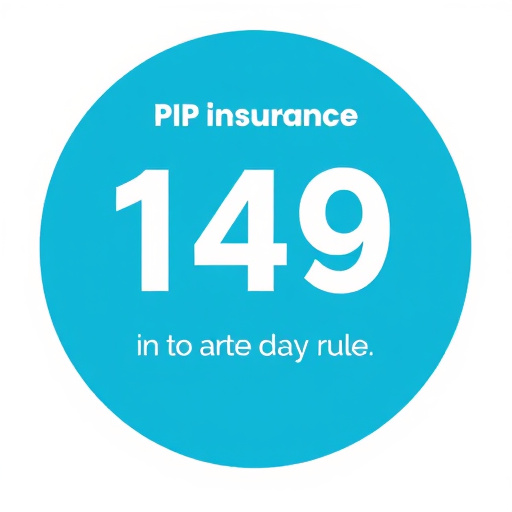Chronic cranial discomfort, characterized by persistent headaches or migraines, severely impairs quality of life. Proper diagnosis is key for effective management, with Personal Injury Protection (PIP) insurance's 14-day rule facilitating timely access to specialized care. This rule enables patients to seek treatment without prior approval, covering medical expenses related to chronic conditions like sinus issues and structural abnormalities. By adhering to this guideline, individuals can improve symptoms, enhance well-being, and reduce long-term effects, making specialized care accessible for proactive healthcare management.
Chronic cranial discomfort (CCD), or persistent headaches, significantly impacts daily life. This article explores specialized care options for CCD, focusing on understanding symptoms and causes. We delve into the crucial role of PIP (Personal Injury Protection) insurance in covering specialized treatments and the importance of the 14-day rule for timely initiation of treatment. Learn about diagnosing underlying conditions, available specialized treatments, and navigating PIP benefits to find relief from chronic headaches.
- Understanding Chronic Cranial Discomfort: Symptoms and Causes
- The Role of PIP Insurance in Covering Specialized Care
- 14-Day Rule: An Overview for Timely Treatment Initiation
- Diagnosing the Underlying Conditions Behind Chronic Headache
- Types of Specialized Treatments Available for Chronic Cranial Discomfort
- Navigating the Process: How to Access PIP Benefits for Chronic Headache Relief
Understanding Chronic Cranial Discomfort: Symptoms and Causes

Chronic cranial discomfort, often referred to as chronic headaches or migraines, is a complex condition that can significantly impact an individual’s quality of life. Unlike typical headaches that subside with rest or over-the-counter medication, chronic cranial discomfort persists for prolonged periods, lasting for months or even years. This ongoing pain can be debilitating, affecting daily activities and overall well-being.
Several factors contribute to the development of this condition. Symptoms may include persistent tension, sharp pains, or pulsating headaches often accompanied by nausea, sensitivity to light and sound (photophobia and phonophobia), and sometimes visual disturbances. Causes range from genetic predisposition and environmental triggers like stress, certain foods, or lack of sleep, to underlying medical conditions such as sinus issues, eye problems, or even structural abnormalities in the head and neck region. Understanding these symptoms and causes is crucial for effective management, and individuals experiencing persistent cranial discomfort should consult healthcare professionals for a proper diagnosis, especially when seeking PIP insurance benefits under the 14-day rule.
The Role of PIP Insurance in Covering Specialized Care

Chronic cranial discomfort, or persistent headaches, can significantly impact an individual’s quality of life. In such cases, specialized care becomes essential, and here is where PIP insurance plays a crucial role. Personal Injury Protection (PIP) insurance is designed to provide financial assistance for medical expenses related to non-fatal injuries, including those arising from accidents or chronic conditions. One notable aspect of PIP insurance is the 14-day rule, which allows policyholders to initiate treatment without prior approval from their insurer. This enables patients to access specialized care promptly, especially when dealing with complex issues like chronic cranial discomfort.
With the 14-day rule in place, individuals suffering from such conditions can seek specialized medical advice, undergo diagnostic tests, and commence tailored treatment plans. This prompt action is vital as chronic headaches can have various underlying causes, including neurological disorders, sinus issues, or even psychological factors. Specialized care ensures a comprehensive assessment and treatment approach, potentially leading to significant improvements in symptoms and overall well-being.
14-Day Rule: An Overview for Timely Treatment Initiation

The 14-Day Rule is a critical policy under PIP (Personal Injury Protection) insurance, designed to ensure prompt and efficient treatment for chronic cranial discomfort. This rule stipulates that individuals experiencing persistent head pain should seek medical attention within 14 days of the onset of symptoms. Early intervention is key in managing such conditions effectively. By adhering to this guideline, patients can benefit from timely diagnosis and access to specialized care, which is crucial in mitigating long-term effects and enhancing overall well-being.
Delving deeper into the 14-day rule, it encourages proactive healthcare management. Many chronic cranial discomfort cases respond well to prompt treatment, often involving a multi-faceted approach. This may include medication adjustments, physical therapy, or specialized interventions tailored to the patient’s unique needs. By initiating treatment within this specified timeframe, patients can navigate their healthcare journey with better outcomes and reduced risk of symptom escalation.
Diagnosing the Underlying Conditions Behind Chronic Headache

Diagnosing the root cause of chronic cranial discomfort is a meticulous process that often requires a comprehensive approach. Healthcare professionals employ various techniques to unmask the underlying conditions contributing to persistent headaches. This may include reviewing medical history, conducting thorough physical examinations, and ordering specialized tests. One critical step is identifying potential triggers, such as stress, sleep disorders, or dietary factors, which can initiate or exacerbate headache episodes.
In many cases, insurance policies like PIP (Personal Injury Protection) play a significant role in facilitating access to diagnosis and treatment. The 14-day rule, a common provision in these plans, ensures that individuals have a limited time frame to seek medical attention for recent injuries, including those causing chronic headaches. Early intervention can be pivotal in managing and preventing further complications.
Types of Specialized Treatments Available for Chronic Cranial Discomfort

When it comes to managing chronic cranial discomfort, a range of specialized treatments are available, tailored to address the unique needs of each patient. These advanced therapies often play a pivotal role in providing relief and enhancing the overall quality of life for individuals struggling with persistent head pain. One such treatment is biofeedback, which teaches patients how to control their body’s functions through signals sent from a computer. This non-invasive approach helps manage symptoms by training individuals to relax muscles and regulate blood flow, thereby reducing cranial discomfort.
Another specialized option is trigger point injections, which involve the administration of medications directly into specific points in the head and neck area. These injections can effectively relieve pain associated with chronic tension headaches and other related conditions. Additionally, physical therapy specifically designed for cranial discomfort can offer significant benefits. Chiropractors and physical therapists use a variety of techniques, including gentle adjustments and specialized exercises, to reduce muscle tension and improve overall alignment, thereby addressing the root causes of many types of chronic cranial pain. These treatments, often supported by PIP insurance plans following the 14-day rule, provide individuals with effective tools to manage their symptoms and regain control over their well-being.
Navigating the Process: How to Access PIP Benefits for Chronic Headache Relief

Navigating the process of accessing PIP (Personal Injury Protection) benefits for chronic headache relief can seem daunting, but understanding the steps involved is crucial. The first step is to ensure you have a clear diagnosis from a healthcare professional, confirming your chronic cranial discomfort. Once diagnosed, familiarize yourself with the 14-day rule, which states that medical treatments or interventions must be initiated within 14 days of the injury or onset of symptoms for PIP coverage. This rule is in place to ensure timely and appropriate care.
Next, gather all necessary documentation, including medical records, prescriptions, and reports from specialists who have assessed your condition. Submit these documents to your insurance provider, along with a detailed explanation of your treatment plan and its expected outcomes. Keep in mind that communication is key; regularly update your insurer about any changes in your condition or treatment regimen. By following these steps, individuals suffering from chronic headaches can effectively access PIP benefits designed to provide relief and support for their long-term care needs.














